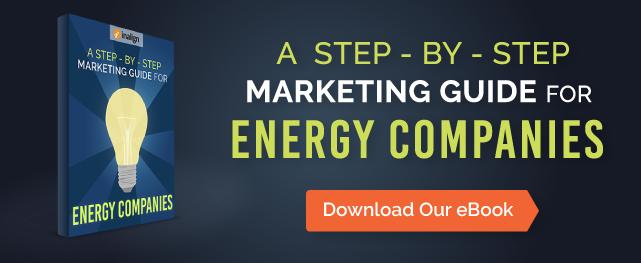Many retail energy companies will buy TV and/or radio advertising to build brand awareness and drive immediate results in target markets.
For consumers who do not know they have a choice in who supplies their electricity and natural gas, TV and radio ads can be a quick way to inform and educate them about energy choice.
However, TV and radio ads are expensive. And, with so many stations and blocking options (think DVR, Netflix, Pandora, Sirius, etc.) available to consumers, it’s difficult to target the ads just to your buyer personas.
Which raises a few questions for those using TV and/or radio advertising as part of their overall marketing strategy:
- Have you set goals for the number of leads and customers you expect to obtain from your TV and radio campaigns?
- Do you have a way to measure the performance and ROI for these campaigns?
- If your ads have a call-to-action to visit your website, do you have a clear path visitors can follow from your ad to where you want them to go on your website to become a lead and customer?
If you answered no to any of these questions, inbound marketing can help.
Inbound marketing is a data-driven approach to marketing. It relies on marketing that is connected via the Internet where virtually everything can be tracked, measured and analyzed.
By adapting inbound marketing techniques and best practices to traditional marketing approaches, such as TV and radio advertising, you can access actionable data that can help you make better decisions about your advertising investment and deliver better results.
Here’s how:
1. Set Marketing Goals for Your Ads
While it may seem obvious, your ad needs to be connected to your marketing goals. You’re paying for the ad so make sure it’s going to deliver the leads and customers you want.
For example, if your company’s overall sales and marketing goal is to acquire 100 new customers per month and your conversion rate is 2 percent, you will need 5,000 leads per month. Then, determine what percent of these leads and customers you expect to be delivered from your TV and radio advertising campaigns. If it’s 20 percent, then your TV and radio campaigns need to deliver 1,000 leads and 20 customers per month.
2. Measure Performance and ROI
This isn’t the demographic and reach data the stations provide. You need to measure results against your actual marketing goals – how many leads and customers did your TV and radio ads deliver?
You can do this in several ways. For example, if your using a phone number in your ad as a call-to-action make sure it’s connected to a call tracking service and integrated with your website data and CRM software software. This will allow you to identify leads coming from your ads and direct them to your sales team.
If your ad uses a call-to-action directing viewers/listeners to go to your website, you can either:
- Set up a special landing page that’s mentioned in the ad (e.g., YourSite.com/TV) and designed to complement your ad, capture lead information, and track visit, lead and customer metrics; or
- Create a CTA graphic on your homepage that will be recognized by people who saw your ad and can take them to your special landing page.
3. Create a Clear Conversion Path for Prospects
Not all prospects that come to your website from your TV and radio ads will be ready to buy. Some just want more information and others want to know more about their options. We call this the Buyer’s Journey.
Since you don’t know which stage your prospects are in, you need to design your website around each stage. This approach will give you more opportunities to engage any prospect that comes to your website.
When visitors from your ad become leads, usually by filling out a form on your landing page, you can then nurture them through the buying process with automated and personalized lead nurturing messages.
Conclusion
By applying inbound marketing techniques and best practices to your TV and radio advertising campaigns, you can capture actionable data that can be used to know which leads and customers came from your TV and radio ads.
These insights will help you make better marketing decisions in the future that can generate more leads and sales.








